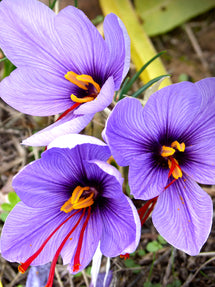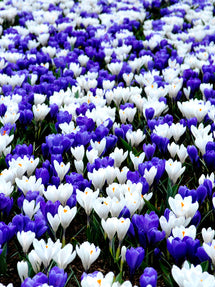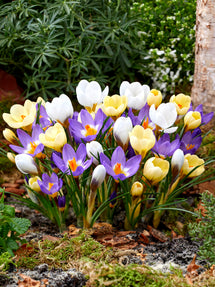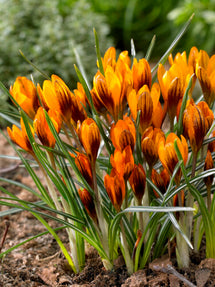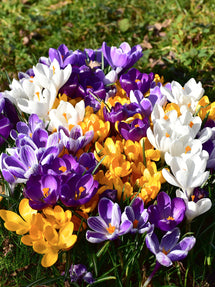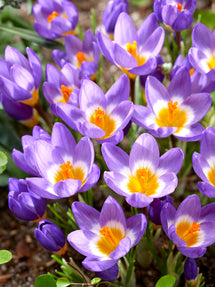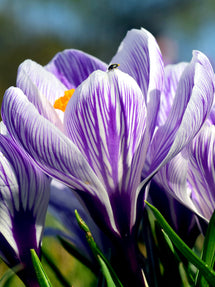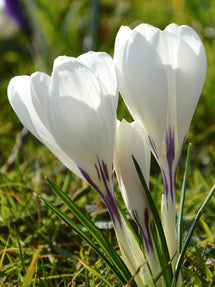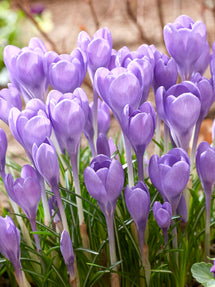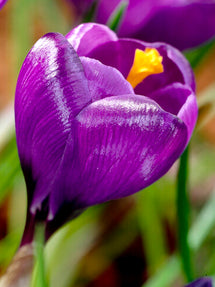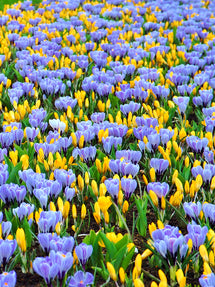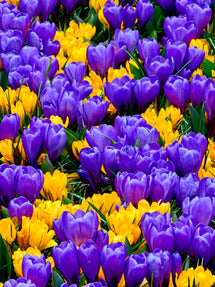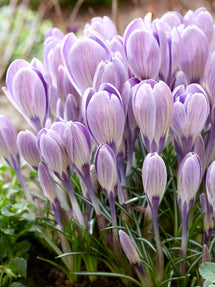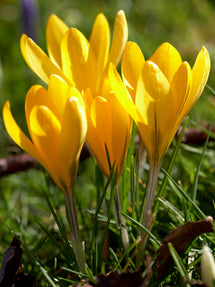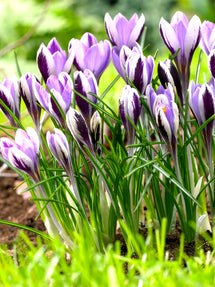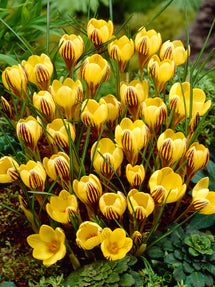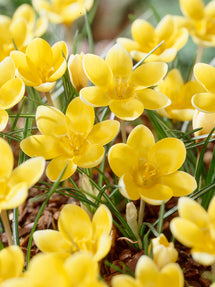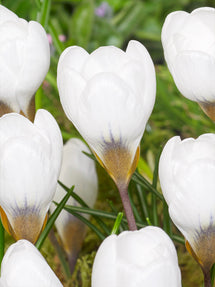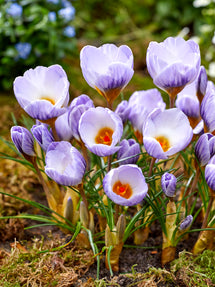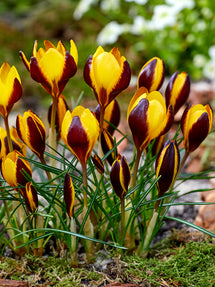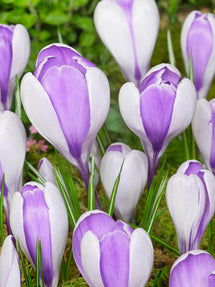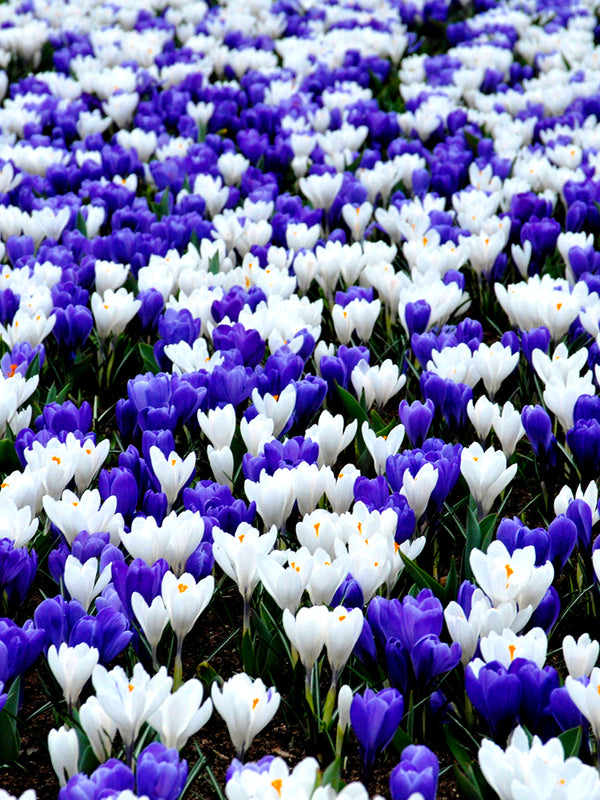Crocus
Showing 1 - 23 in 23 items
Top Quality Crocus Bulbs For Fall Planting
What Is Special About A Crocus? More Than Just A Pretty Face
The Crocus is one of the earliest and most rewarding flowers you can plant. These hardy perennials are part of the Iris family, comprising approximately 90 species that grow from corms. They push through the late winter snow with bright, goblet-shaped blooms and grass-like leaves that instantly lift the mood of any garden. Their easy nature makes them a favorite among both beginners and seasoned gardeners. They also pair well with taller spring-flowering bulbs, such as early Tulips, Snowdrops, and Daffodils.
However, the Crocus has more to offer than just its beauty. These flowering plants are a lifeline for bees and other pollinators when little else is in bloom. They naturalize beautifully in lawns, multiply on their own, and provide winter garden color. They also rarely attract deer, rabbits, or squirrels. With their combination of resilience and charm, Crocus bulbs bring much more to your garden than meets the eye.
A Dozen Of Different Crocus Varieties: From Classics To Striped Crocuses
Crocus flowers may be small, but their variety is impressive. Native to the Alps and the Mediterranean, they’ve adapted to thrive in gardens and landscapes around the world, including yours. At DutchGrown, we offer a wide selection of top-quality Crocus bulbs to suit every gardener's taste and growing conditions:
- Crocus “Sieberi Tricolor”: This variety boasts a display of six-petaled, lilac-blue flowers adorned with a striking white band that encircles a radiant golden-yellow center.
- Crocus “Pickwick”: This large-flowered Crocus features striped blooms that combine brilliant white and cool blue, contrasting with the warm yellow anthers at their centers.
- Crocus “Striped Bird”: This variety has a unique pattern of lavender petals striped with creamy white, creating a mesmerizing display.
- Crocus “Orange Monarch”: This is an exciting orange Crocus with a contrasting purple to brown flame. A rare beauty!
Crocus Mixes And Saffron Crocus
If you're unsure which Crocuses to choose, our carefully selected mixes combine several beautiful varieties for a vibrant and natural look. Are you looking for fall Crocuses? The Saffron Crocus is a standout, blooming in fall and offering both beauty and a touch of culinary tradition.
How To Grow Crocus Flowers For Maximum Effect In Your Garden
Planting Crocus bulbs is simple, but following a few key steps can significantly impact their blooming potential. Plant them in the fall before the ground freezes, and ensure the soil temperature is 60°F or colder.
First, select a location that receives full sun or partial shade and has well-drained soil. Dig a hole that is 2–3 inches deep and space each bulb roughly 3 inches apart. If you’re planting in containers, you can place them closer together for a fuller effect. Place the bulbs with the pointed tip facing up. Once planted, cover them with soil and water thoroughly to help the soil settle around the bulbs. Bulb fertilizer is not needed. During the growing season, keep an eye on rainfall. If there has been no rain for 3 to 5 days, give the area a light watering.
Crocus blooms appear in late winter or early spring, depending on the circumstances. After flowering, let the foliage die back naturally. With just minimal care and patience, you’ll be rewarded with stunning early color, season after season. Do you need some more guidance? Follow the steps in our growing guide “How to Grow Crocus?”.
Top-quality Crocus Bulbs For Sale At DutchGrown
Are you ready to design your garden with spring-blooming plants? Whether you’re planting a few in containers or creating a naturalized garden display, DutchGrown’s Crocus bulbs deliver reliable results. Our range includes standout individual varieties as well as curated collections designed for maximum impact. Browse our Crocus collection today and start planning your most beautiful spring yet with fall-planted bulbs. We ship throughout the US.
Frequently Asked Questions About Crocuses
Does Crocus Come Back Every Year?
Crocuses are perennials, meaning they return year after year. With proper care and favorable conditions, Crocus bulbs (corms) can bloom reliably each spring for up to five years.
What Is The Best Month To Plant Crocus Bulbs?
The best time to plant Crocus bulbs is in the fall, between September and November, depending on your USDA zone. Aim to plant them when soil temperatures drop to around 60ºF, but before the ground freezes. This gives the bulbs time to establish roots before winter, ensuring a strong and vibrant bloom in the early spring.
What Do You Do With Crocus Bulbs After They Bloom?
After blooming, Crocuses enter a dormant phase. Allow the foliage to remain in place, because it gathers energy through photosynthesis to nourish the bulb for next year. Once the leaves turn yellow and wither naturally, you can gently remove them. You can leave the bulbs in the ground, but if the soil does not drain well, the bulbs may rot.
Do Crocus Bulbs Multiply?
There’s a good chance that Crocus bulbs will multiply every year. As perennials, they return each spring, and with the right conditions, they naturalize readily in direct sunlight or partial shaded locations. This means they’ll gradually spread and form larger clusters year after year, creating an even more beautiful and vibrant display with little effort.
When Does A Crocus Flower?
The flowering season for Crocuses varies depending on the species. Most bloom in early spring or even late winter, when few other plants are showing color. An exception is the Saffron Crocus (Crocus Sativus), which blooms in the fall.
